China
In 2009, Chris traveled to Beijing with his grandpa to make his way from there to Bangkok by train and bus. The route took them to Nanning, Hanoi, Ho Chi Minh City and Siem Reap. Although only a few years have passed since then, long-distance travel was a real adventure at this time: being thrown into a foreign city without understanding the language and writing – and without being able to communicate using a translation app. Chris had Chinese contacts who had written down important addresses in Mandarin in advance and Chris showed them to cab drivers who couldn’t or didn’t want to understand them. Life was still analog and the internet was only available in cafés in the form of brutally slow ISDN lines. An email home every few days had to be enough to let family and friends know how you were doing.
Beijing 2009 was a city that had gone to great lengths the year before to present itself to the world as a modern and forward-looking city as host of the Olympic Games. Everything that could have disturbed this image had apparently been removed. So Chris arrived in a country that was at war with itself and did not yet know which path into the future would be the right one.
All of this characterized Chris’s first visit to China. People kept their distance, communication was almost impossible. Tiananmen Square was intimidating as a taboo and highly guarded place. The security forces were suspicious of anything foreign, and Chris ate food in the restaurants without knowing what he was eating. Now we wanted to go to China again, this time to Shanghai. How would the country have changed?
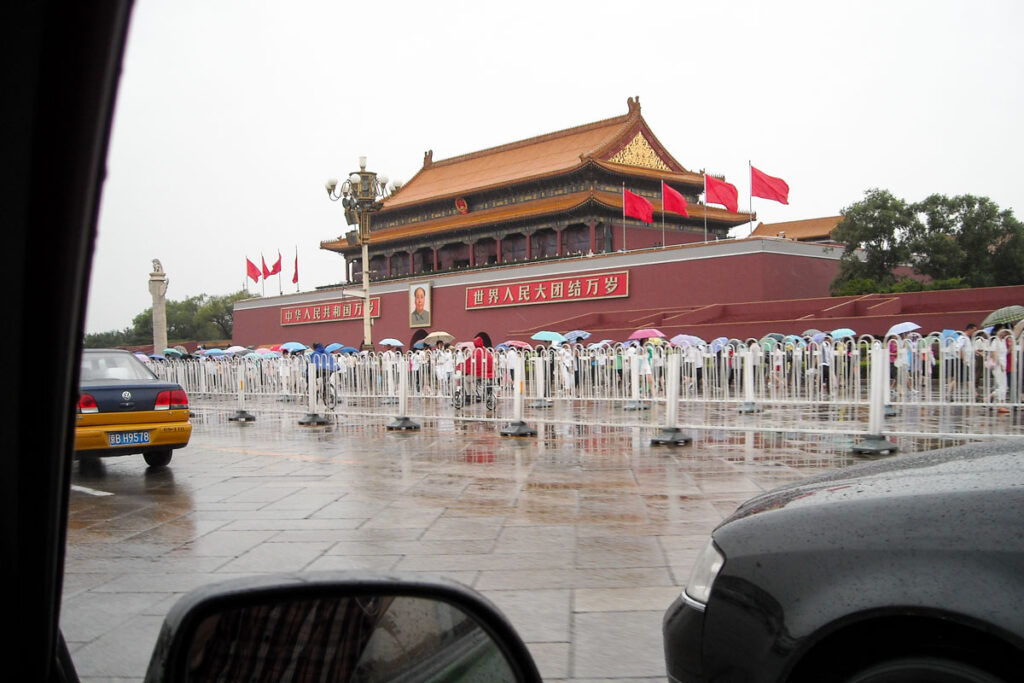
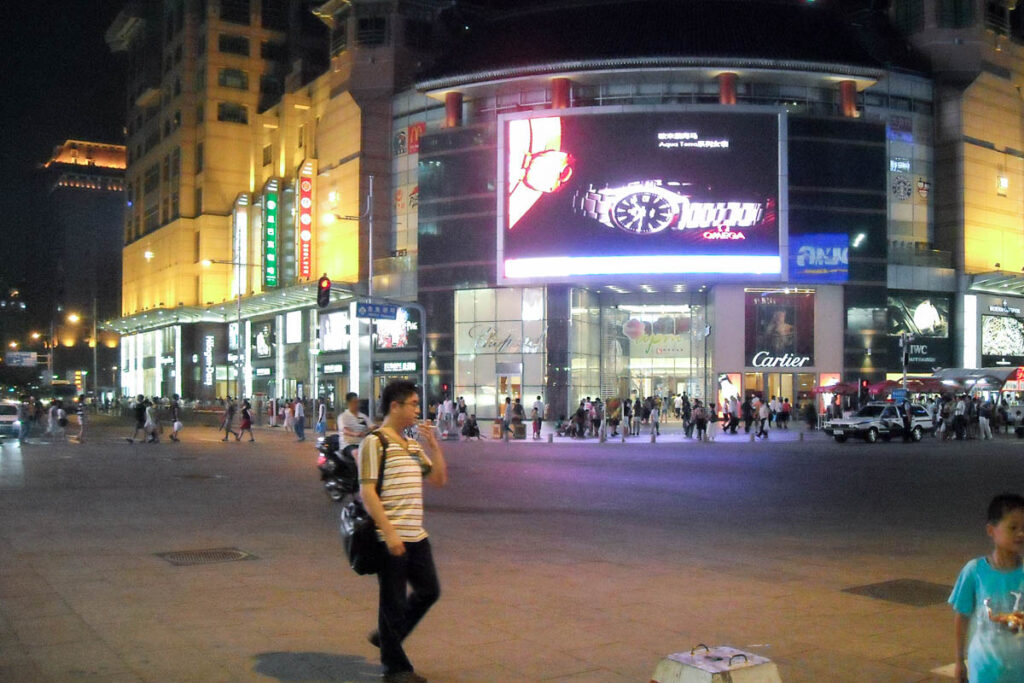
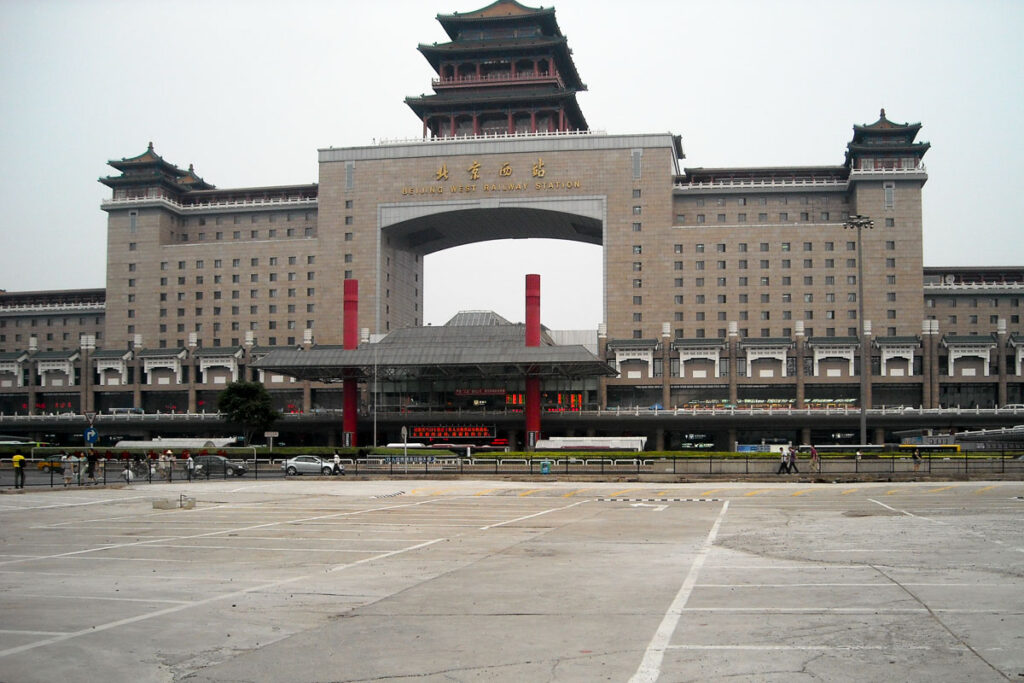
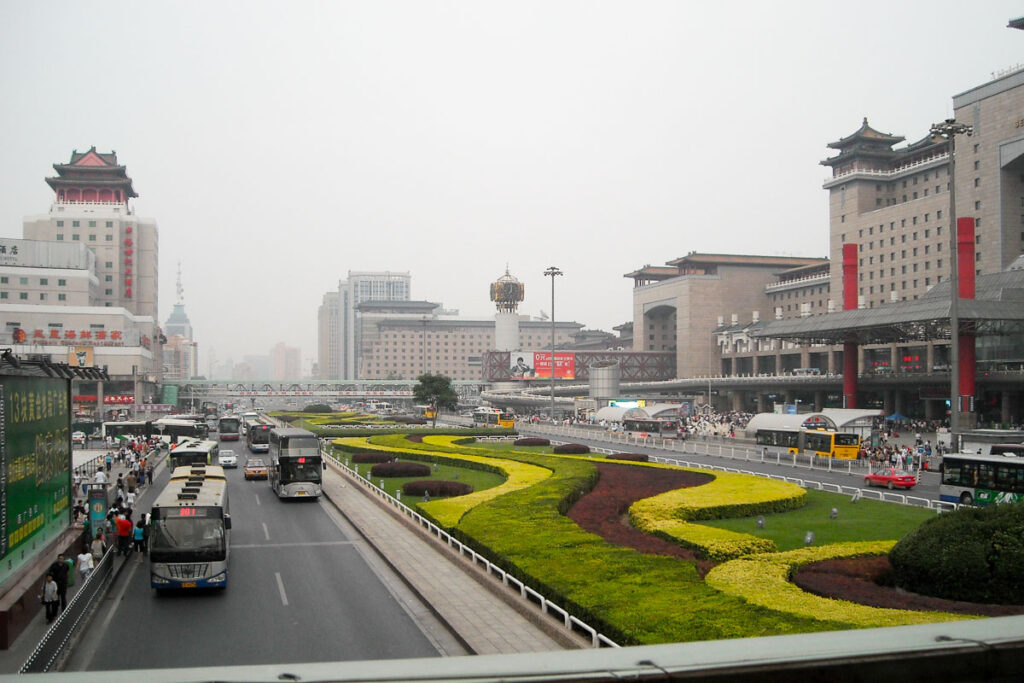
15 years later. We decided to visit Shanghai. Coming back from Taiwan, we have planned four days to get to know the city and the surrounding area. The rain will ruin our plans, so we will have to kill time in hotel rooms and soulless malls. A day trip out of the city falls through.
The very first moments and impressions in Shanghai show us that China is a modern country that does many things differently, perhaps even better, than Europe in many respects. Public transport is perfectly and reliably organized. The city is safe and clean. Thanks to electric vehicles, the multi-lane traffic rolls past us almost silently. On our first morning, we immediately immerse ourselves in Chinese culture and visit the Yu Garden – a beautifully landscaped outdoor area that was once owned by a high-ranking official around 500 years ago. Streams of visitors push their way through the winding paths. The old residential area has been renovated and souvenir stores and food stalls have moved in. It is an innocuous place, with no great history, no contradictions, no flaws. It’s perfect for a Sunday outing, selfies in front of the ornamental ponds, swimming along and being carried.
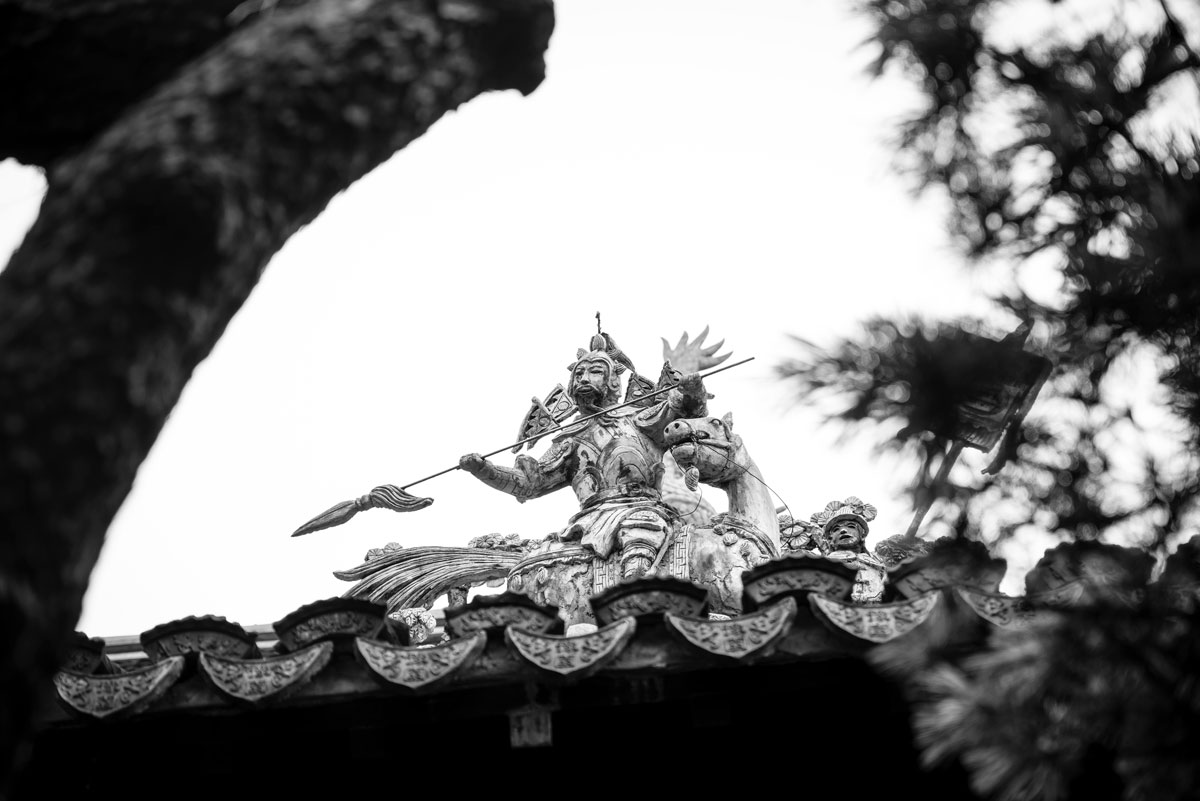
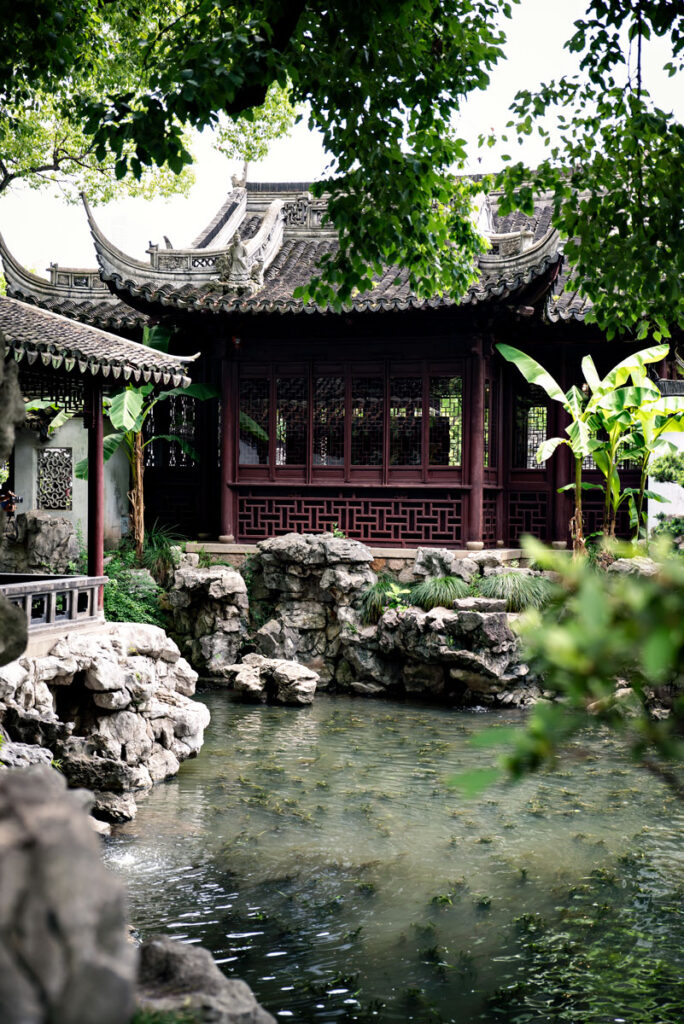
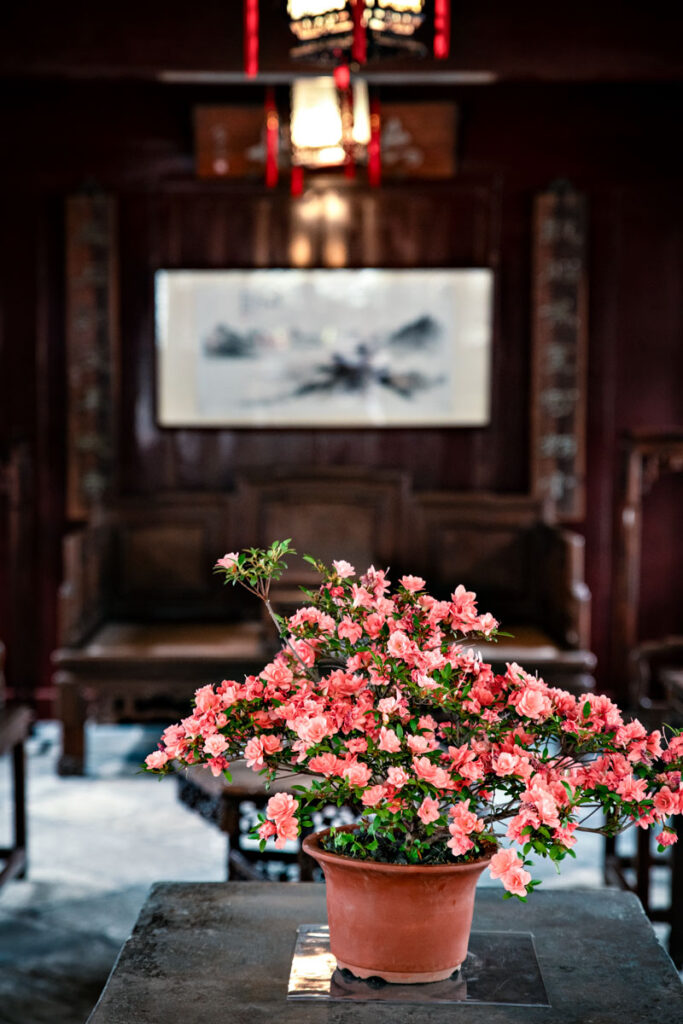
Shanghai presents itself to us as an innovative, clean, green and open city. Everywhere is peaceful and people seem to live together in harmony. The green parks are carefully watered and maintained. As tourists, we get to see renovated houses with hip shopping galleries where workers used to live in very small spaces. The view over to the financial district of Pudong makes it clear what a sky-high position Shanghai sees itself in on the global financial market. Holes the size of entire city districts are being dug into the ground. Construction fences conceal the future that is to be built here. Between glass and concrete, Starbucks and shopping malls, old drawers are being searched for Chinese tradition and culture – something that could be dug out and sold to the world as a unique Chinese charm.
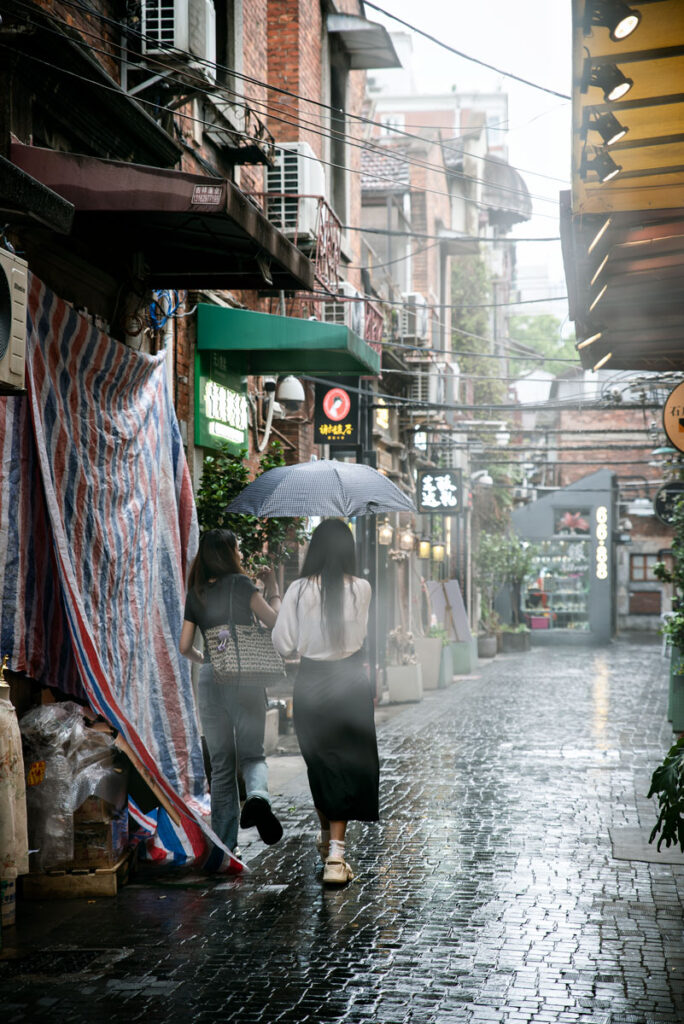
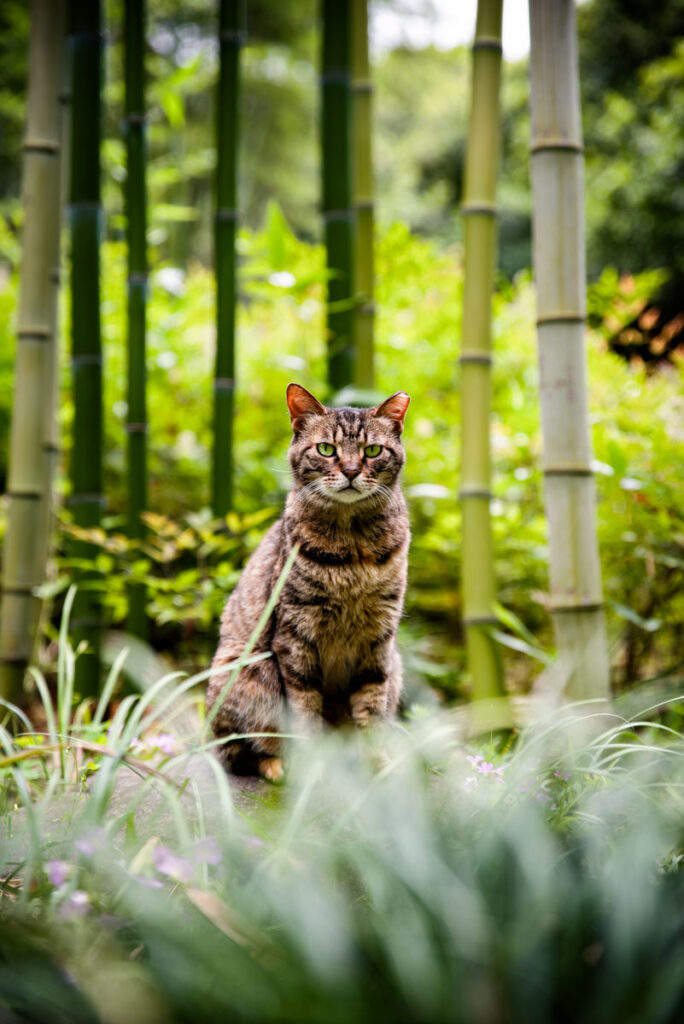
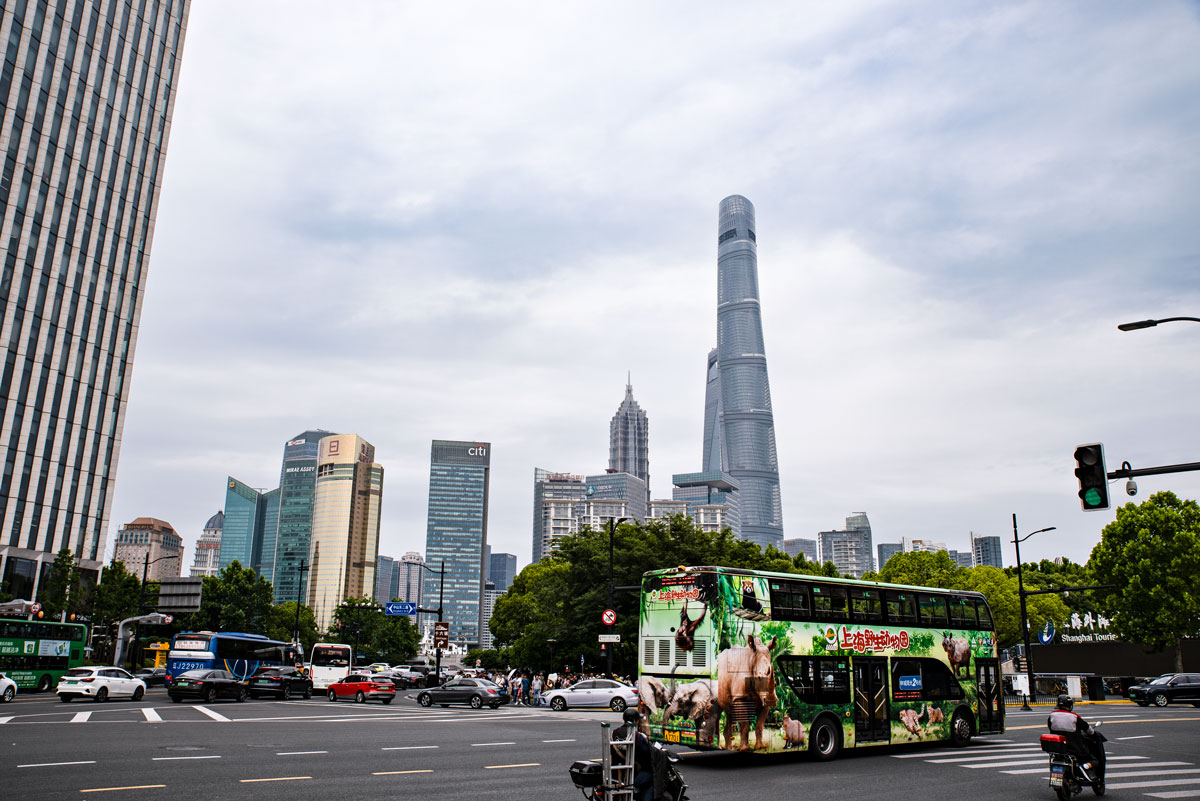
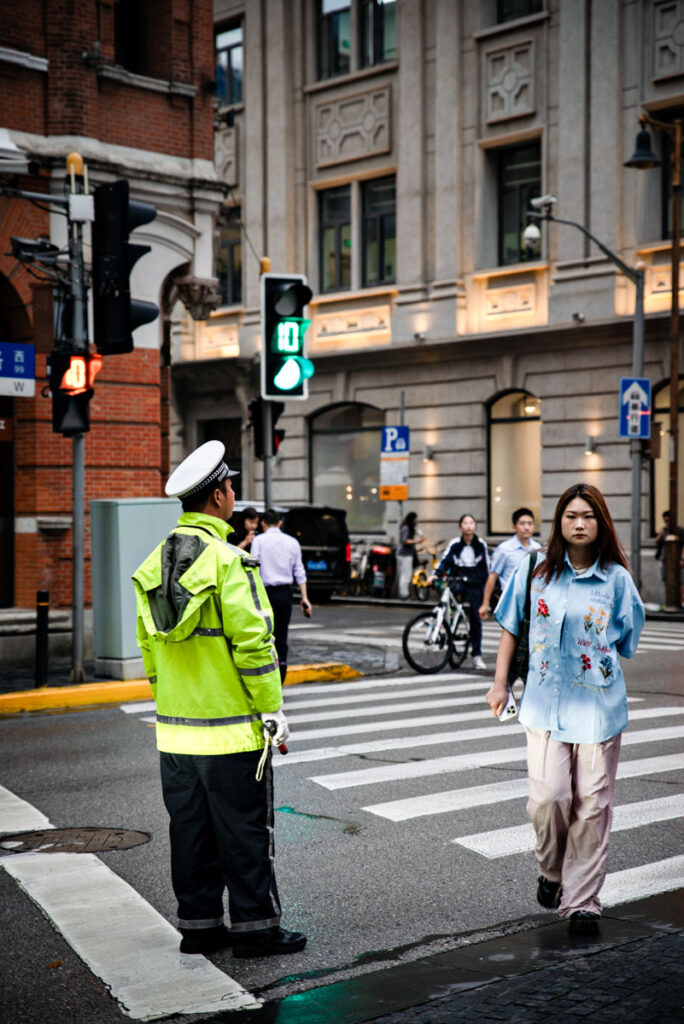
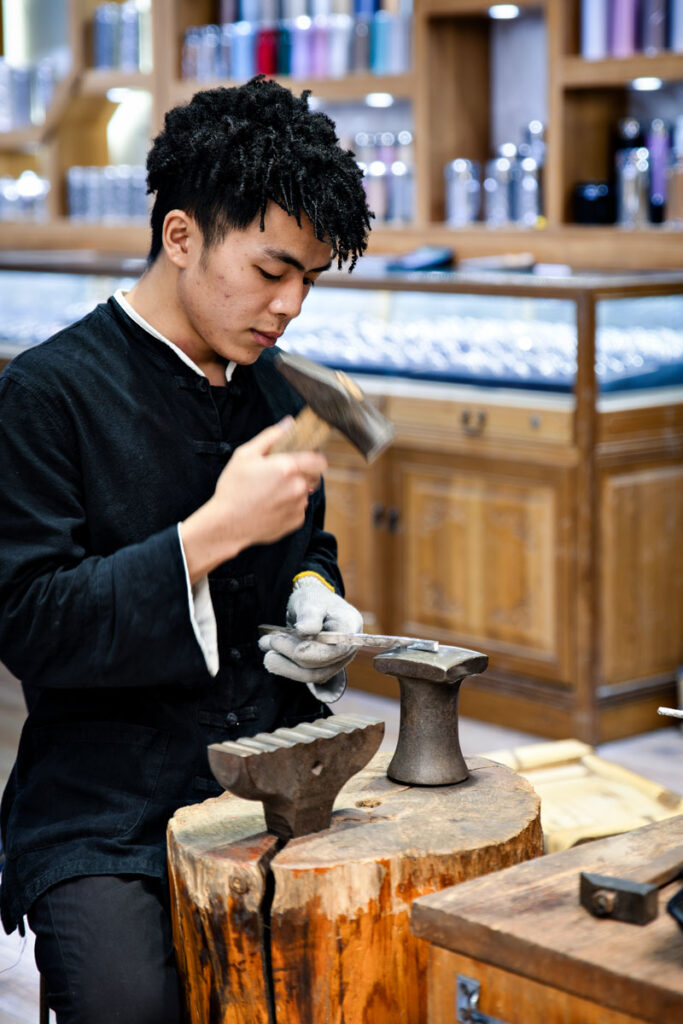
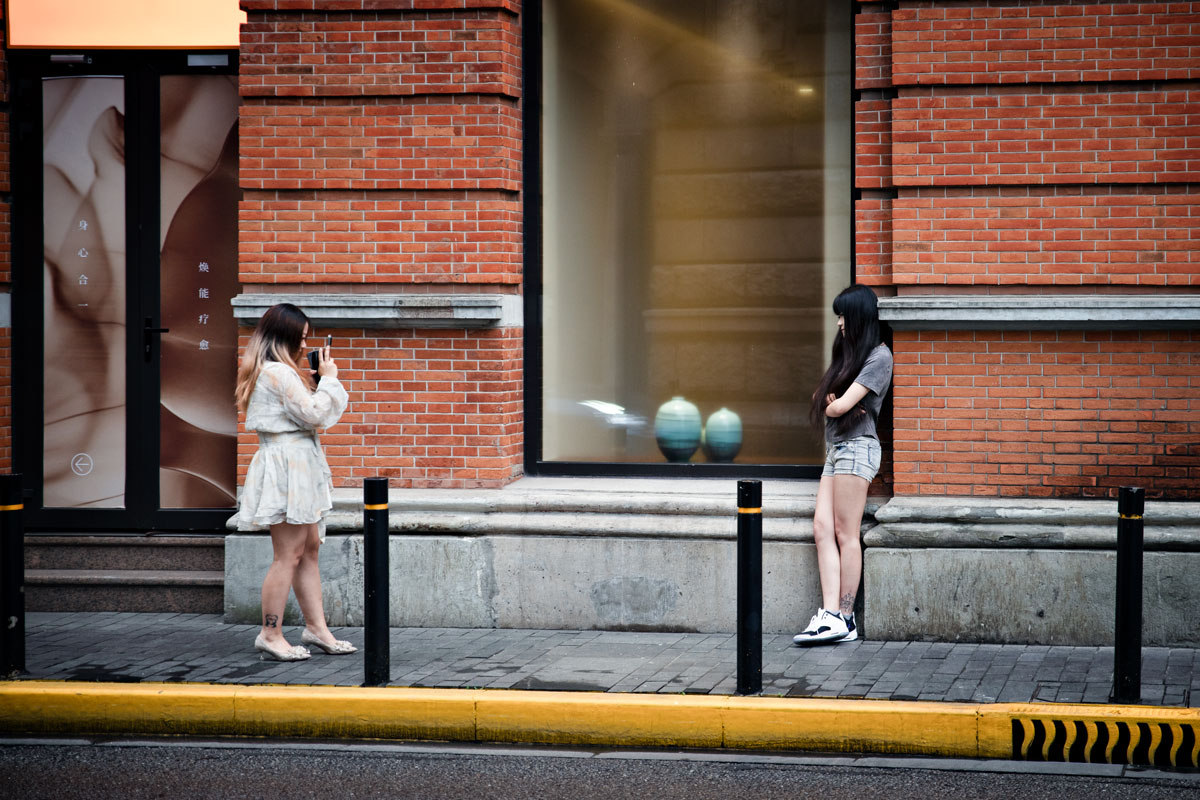
Nanjing Road is a river of people. It is the lifeline of the city, flowing from the People’s Park to the banks of the Huangpu River. It could also be read symbolically: The People’s Park, the heart of the inhabitants, where life and gatherings, leisure and education take place, leads via the fast-paced, commercial, seductive, lustful and earthly Nanjing Road to an end full of wealth and innovation. English buildings from the colonial era dominate the image of the district. Prostitution and gambling were driven out of the dark side streets. In their place came luxury malls, just as they creep into all the beautiful and interesting cities of the world, permeating them with consumption, eating away at them and choking them out as boring, half-digested mush.
Nanjing Road ends at the water. The river washes away all the filth. The river is the border between historic Shanghai and the modern Pudong Special Economic Zone. We walk along the Bund, the riverside promenade. The panorama with the skyline of the world’s tallest skyscraper is breathtaking. Police officers and a countless number of cameras keep an eye on our every move. The façade of this brave new world must be preserved.
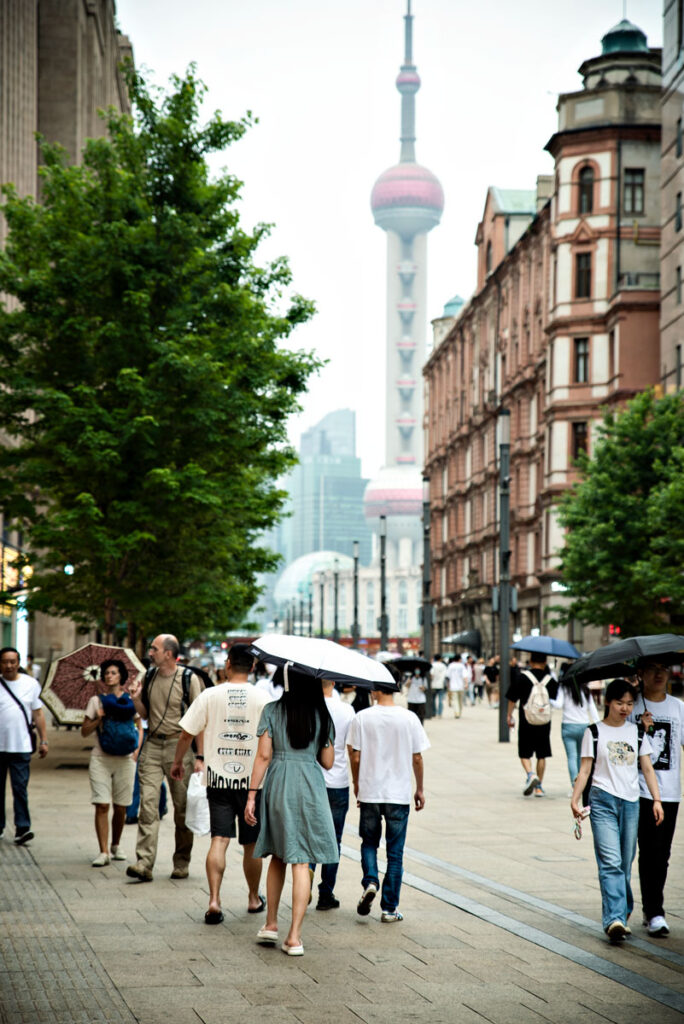
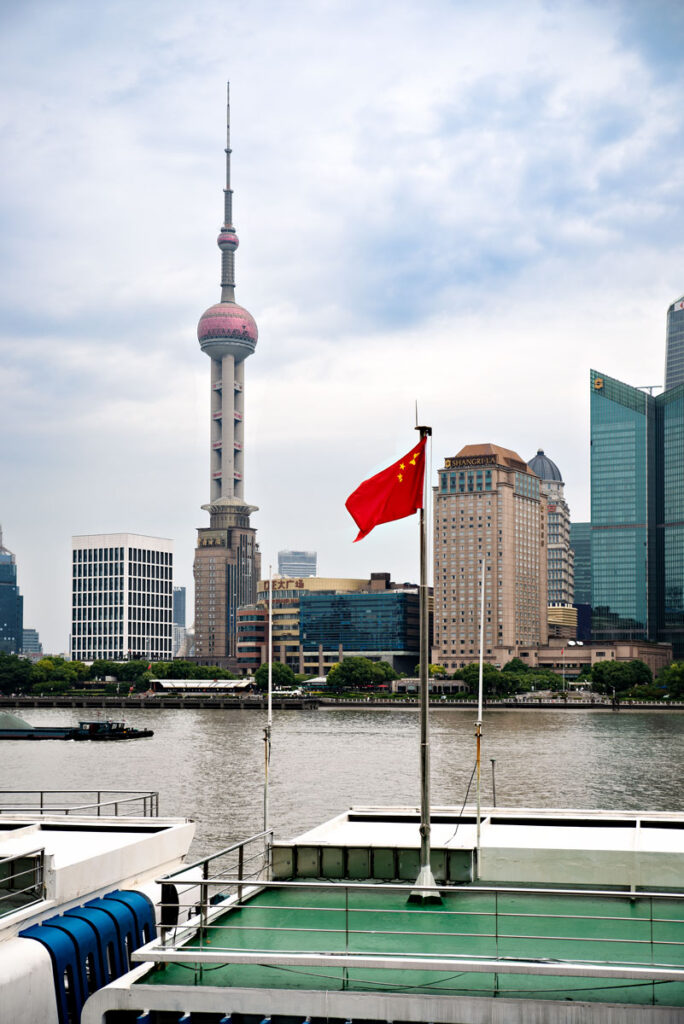
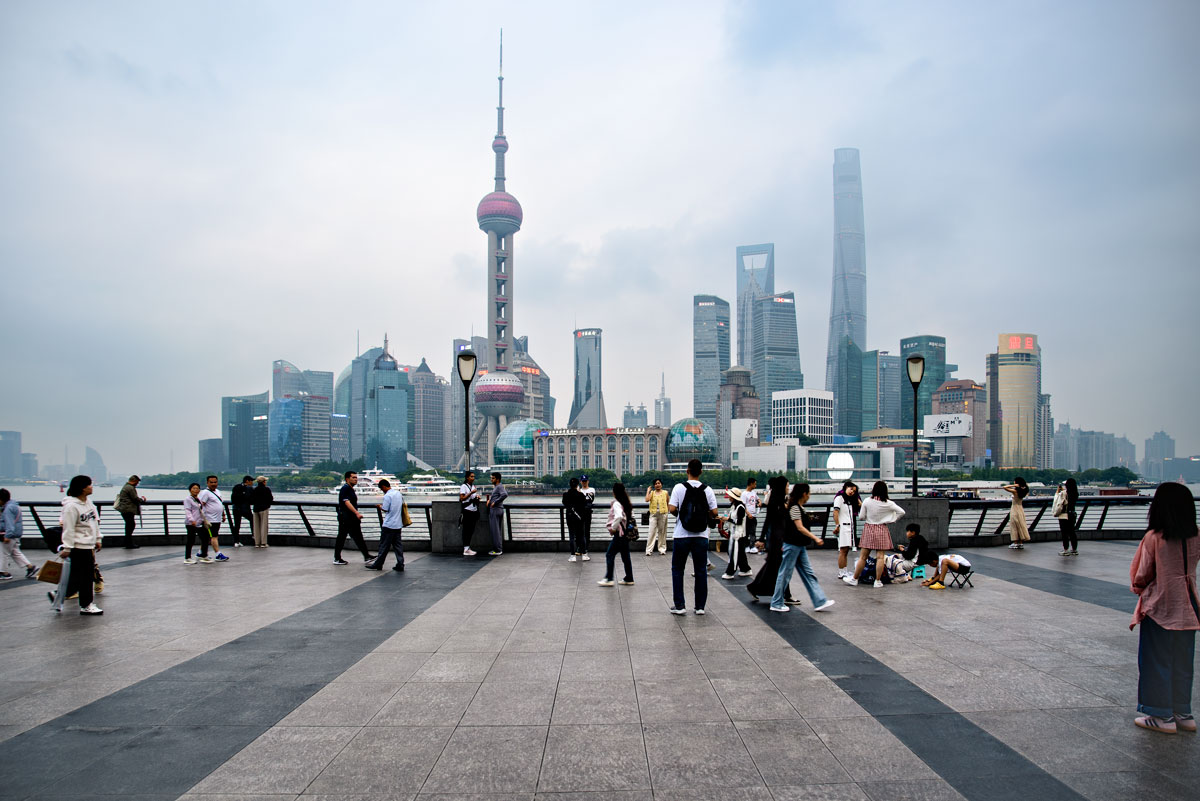
After all the superlatives and the consumer-oriented Nanjing Road, we need some tranquillity and find spirituality in the Jing’an Temple. The spacious courtyard is filled with the smoke of incense sticks. Visitors throw coins in high arches into a huge shrine. Those who hit the shrine’s cauldron are promised great luck. We hit it on the second attempt.
Suddenly, gongs ring and people rush over. Large red paper bags are being burnt in a fireplace. Monks dressed in black have gathered in two rows and accompany the ritual with simple percussion instruments. A golden Buddha statue watches over all the hustle and bustle, with a hint of a smile on its lips.
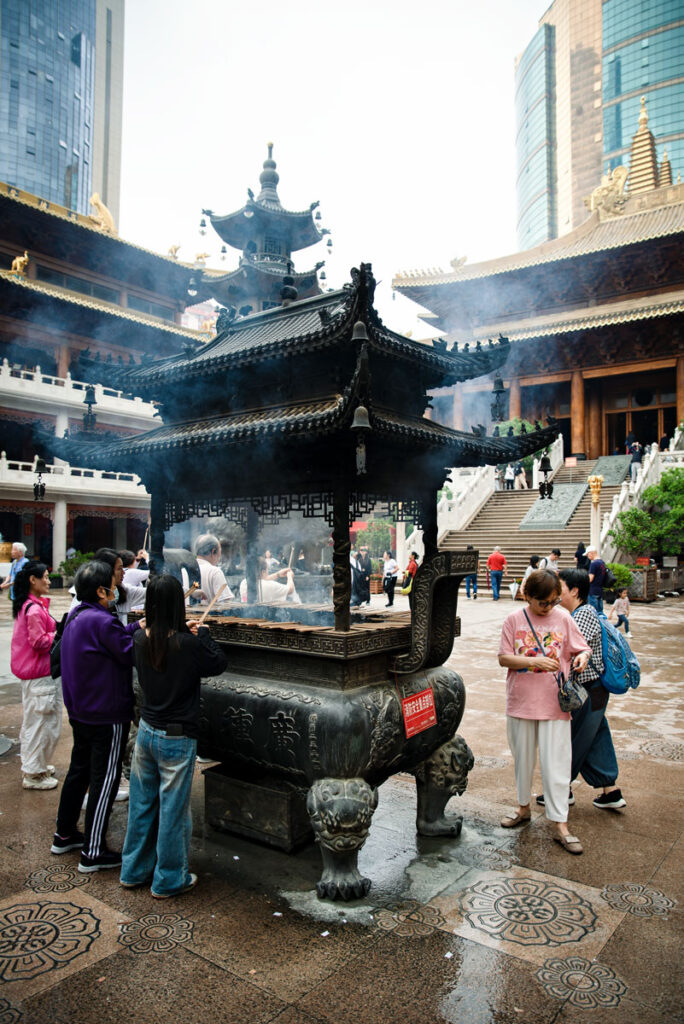


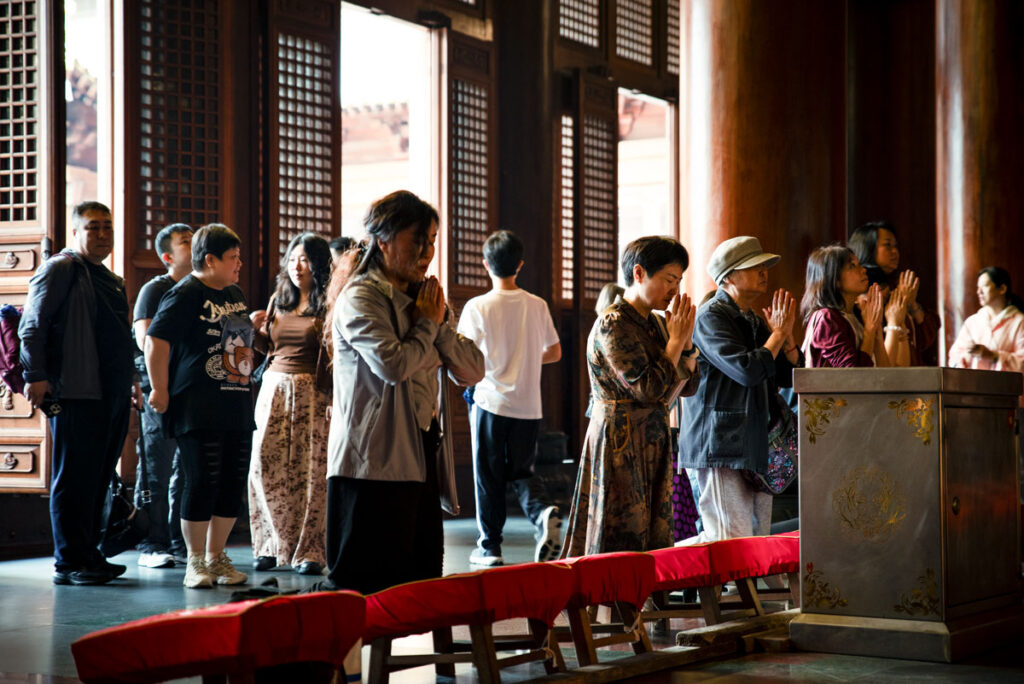

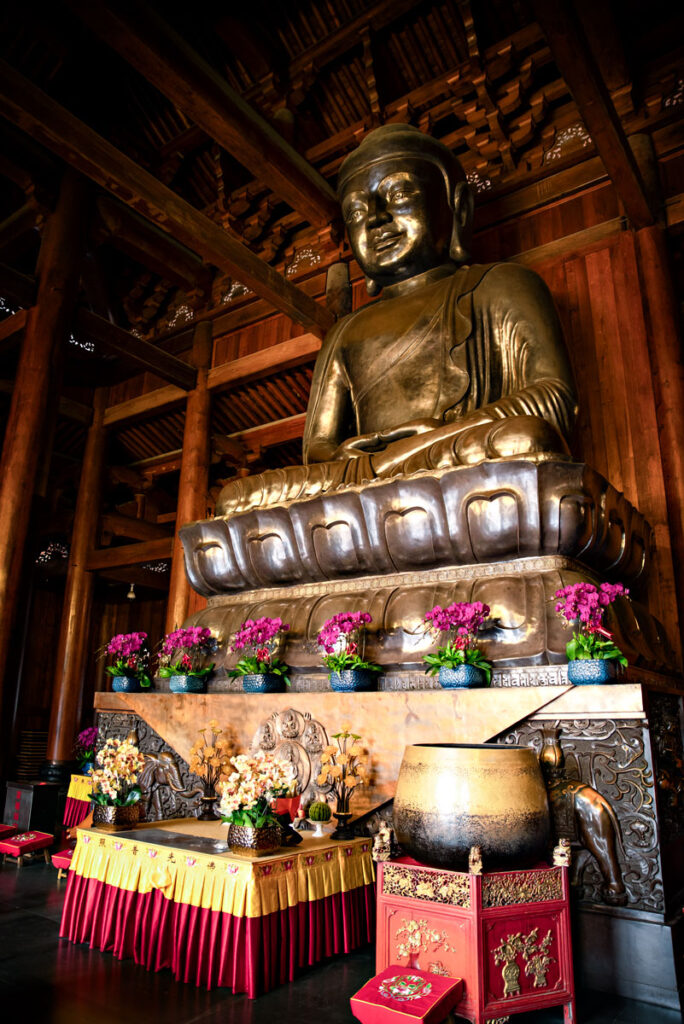
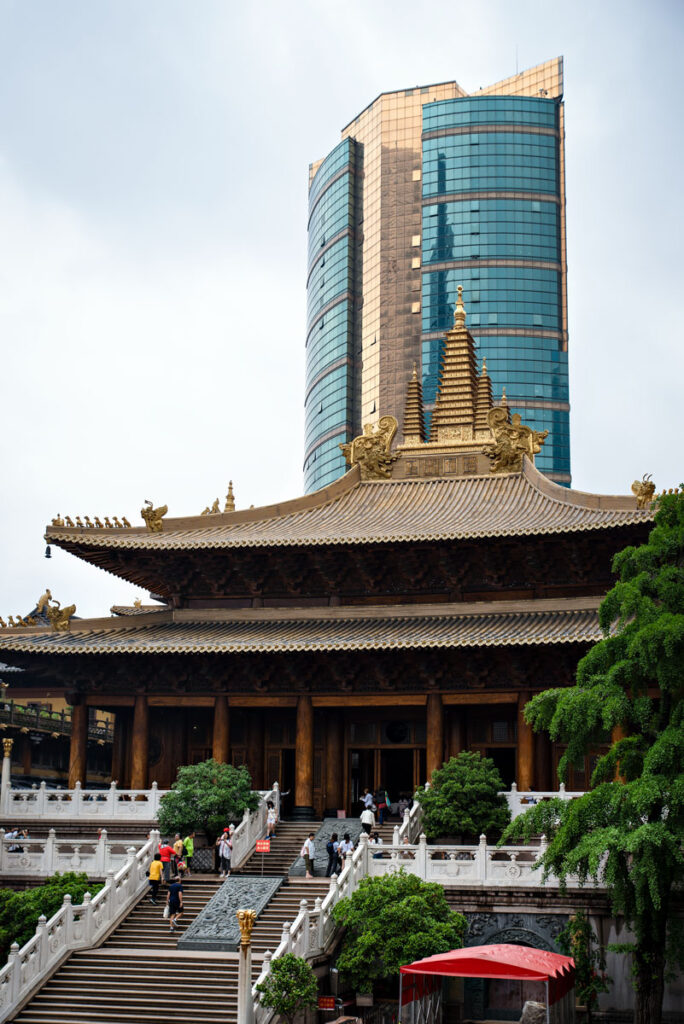
People’s Park is a meeting place. Everyday Chinese life is at its best here. If you come at the weekend, you will experience all its facets. Families with children, but above all couples, singles and pensioners stroll along the winding paths. Some practise kung fu, others Chinese choreography. Musicians rehearse in a shady pavilion. An old lady recites verses on the banks of a small pond. There are rides for children, a Starbucks for the trend-conscious, a marriage market for singles. Brokers have dozens of pieces of paper spread out in front of them. They list all the impressive qualities of the men and women looking for love. Most of them are lonely pensioners, but there are also younger people among them. There is a huge crowd here on the marriage market. It seems as if the Chinese population is suffering from loneliness.
At the edge of the park are the City Planning Museum and the Shanghai Museum. Past and future are elastic concepts here, the presentation of the present a compilation of superlatives. Everything is on track for a golden future.

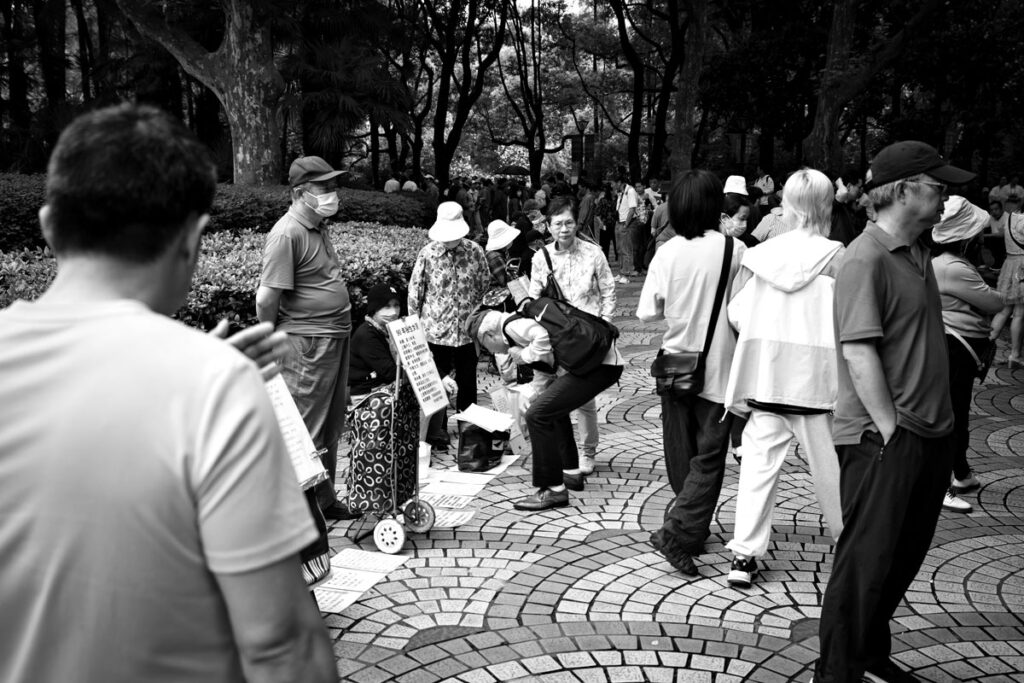
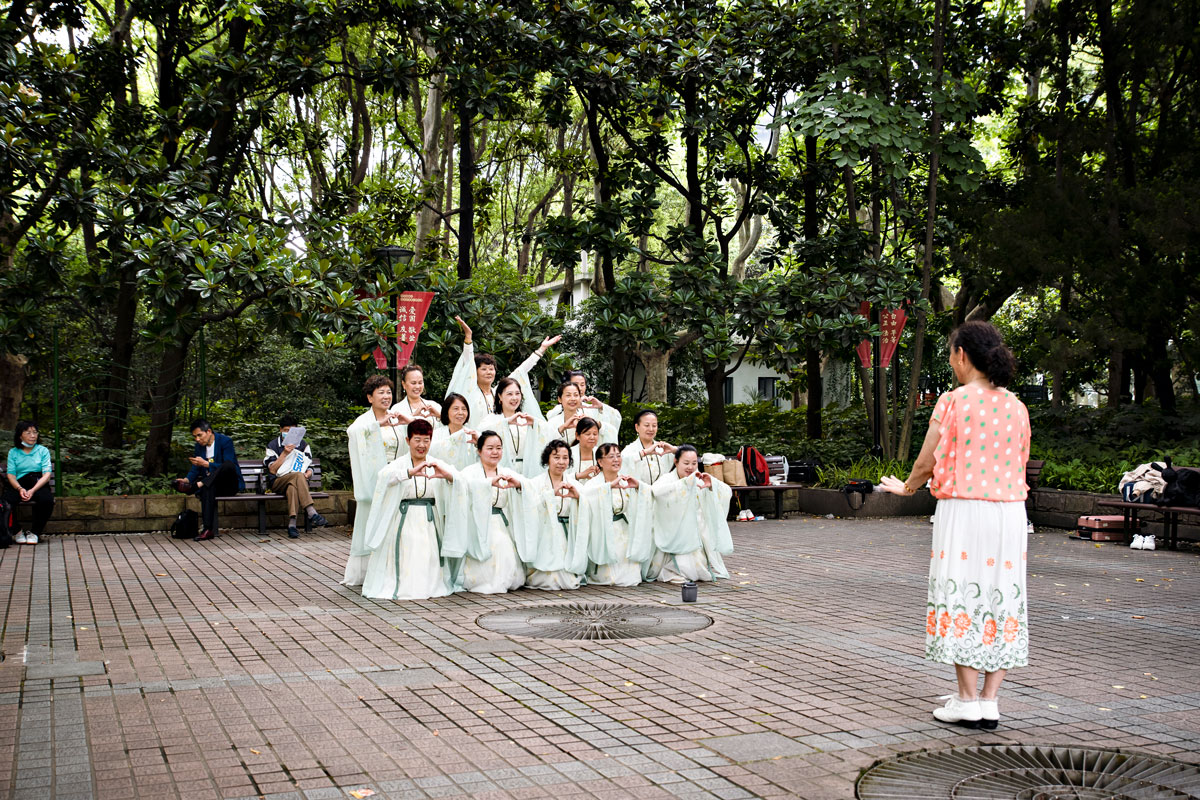
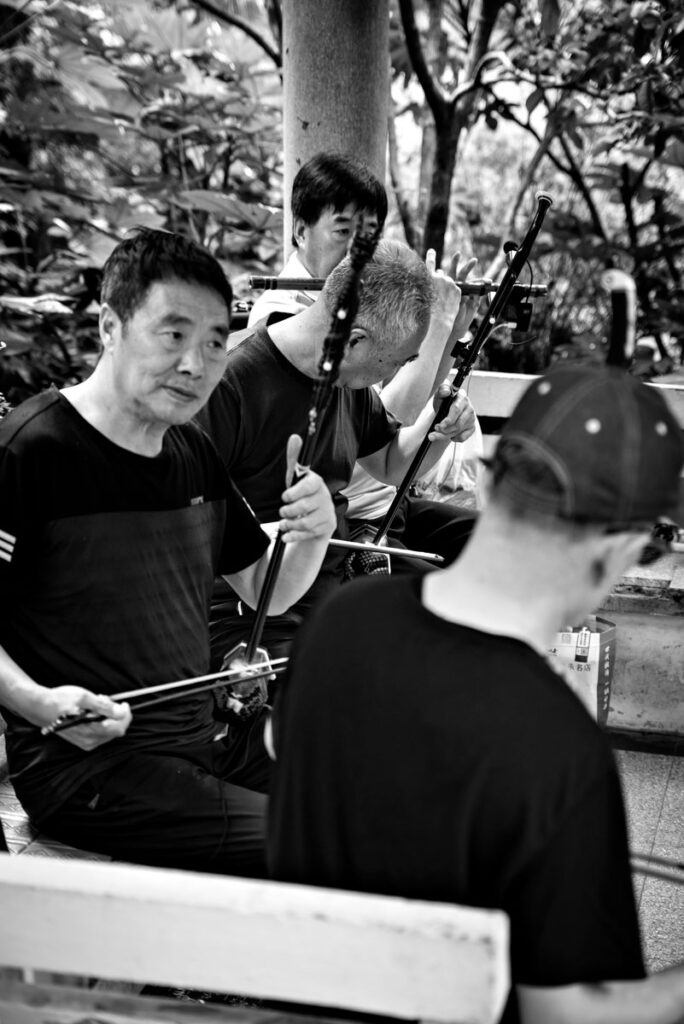
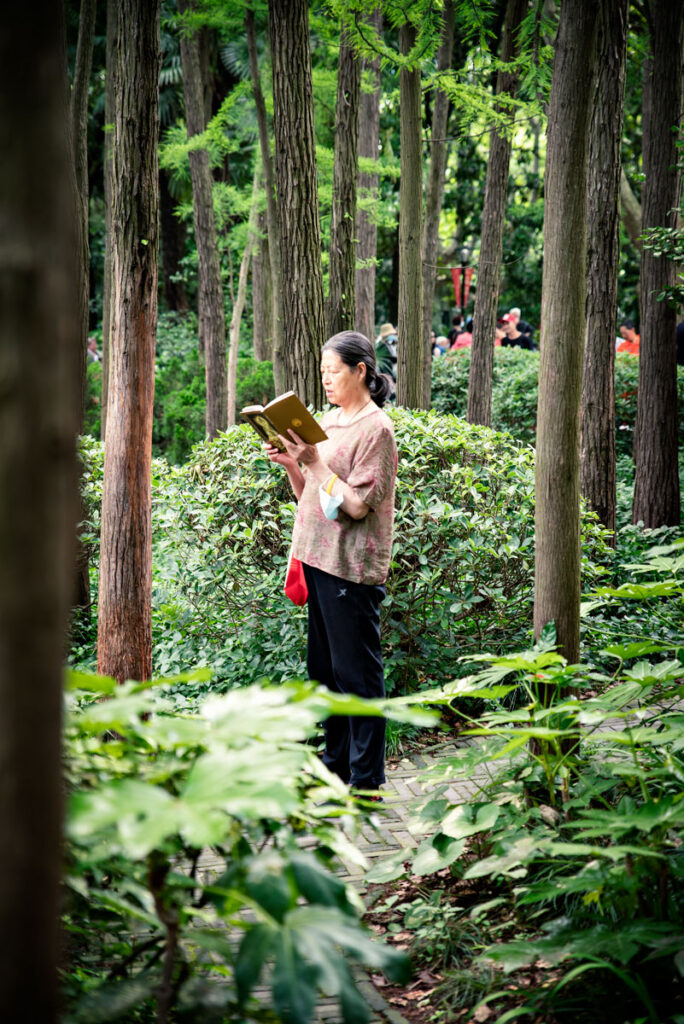
We take the metro over to the other side of the city – to Pudong. On this weekend, the expressways between the skyscrapers are empty. The tallest towers here rise well over 600 meters into the air. The iconic Oriental Pearl Tower from the 1990s dominates the silhouette of its city like no other skyscraper. Each of these towers is a fantasy of power, erectile structures, superlatives cast in concrete. Bathed in red by the evening sun, colorfully decorated by artificial light.
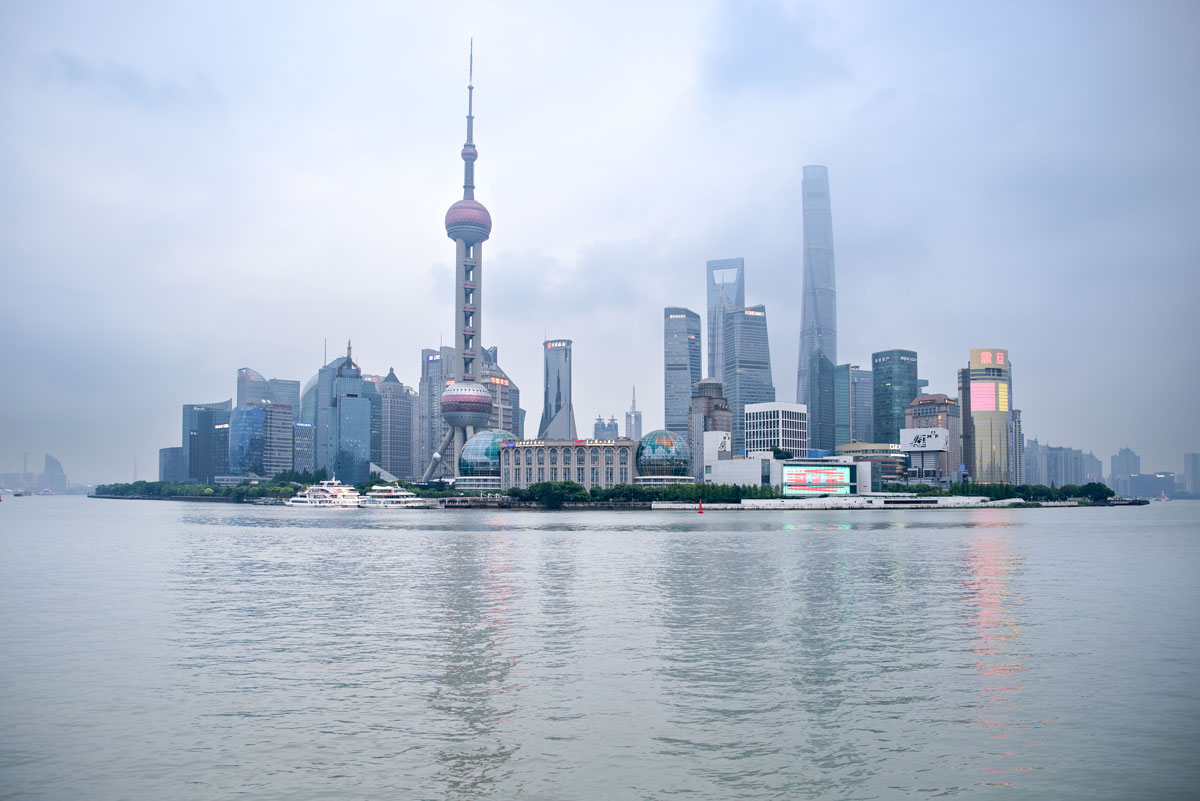
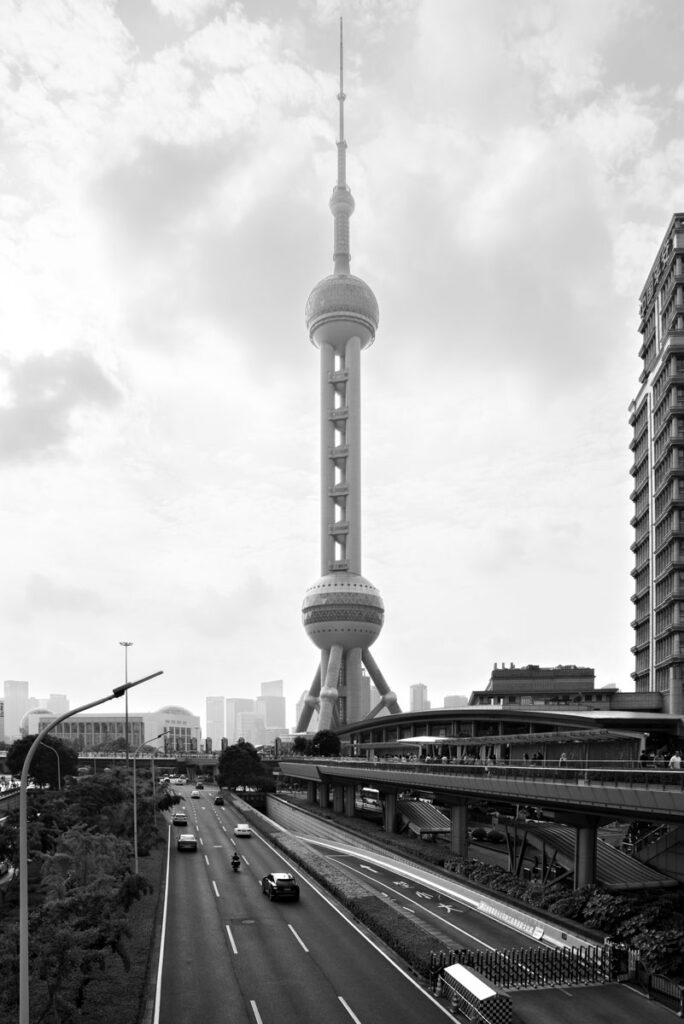
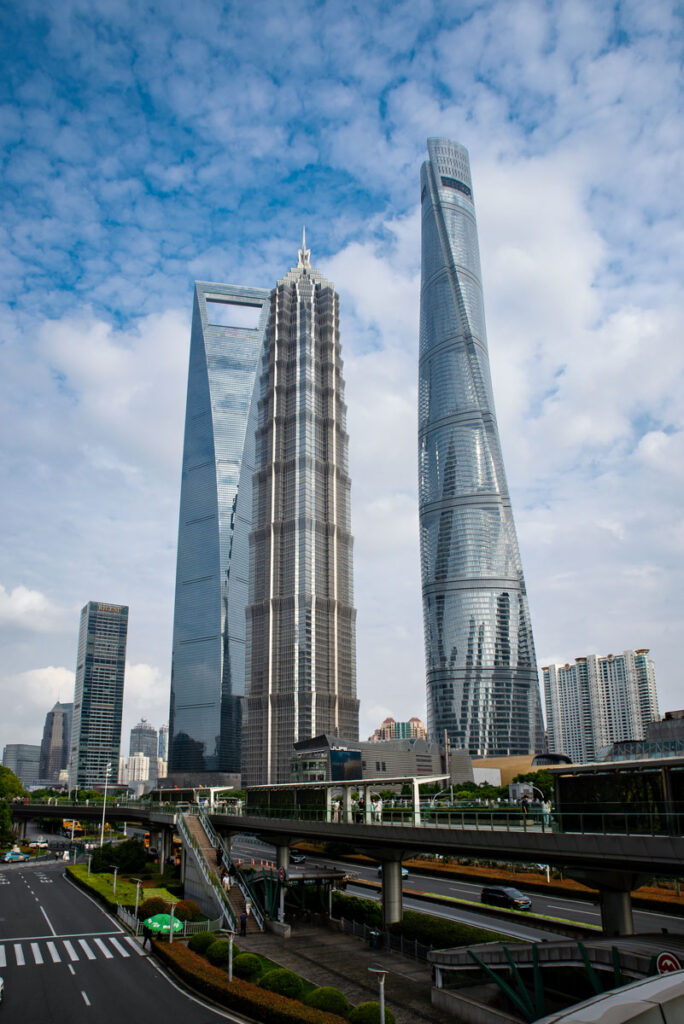
The elevator takes us to a height we have never reached before. Only the visitor platform of the Burj Khalifa in Dubai is even higher.
From the Shanghai Tower, we can see the loops that the Huangpu River makes through the city. We see the clouds and smog that form a bell over the buildings. We see the construction sites that characterize the cityscape like pockmarks. We see residential areas that probably belong only to high-ranking officials – with manicured green spaces and communal pools. We see cars and ships and airplanes and people. We see Shanghai, see no end, see only fragments, fantastic dioramas. Everything is bathed in the pastel shades of the setting sun.
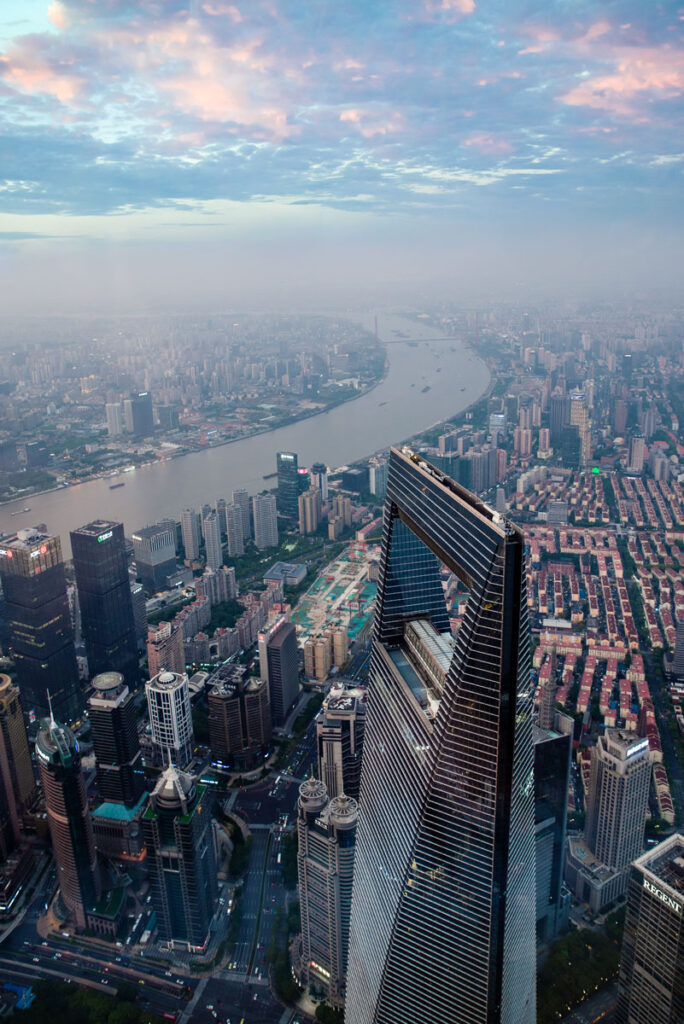
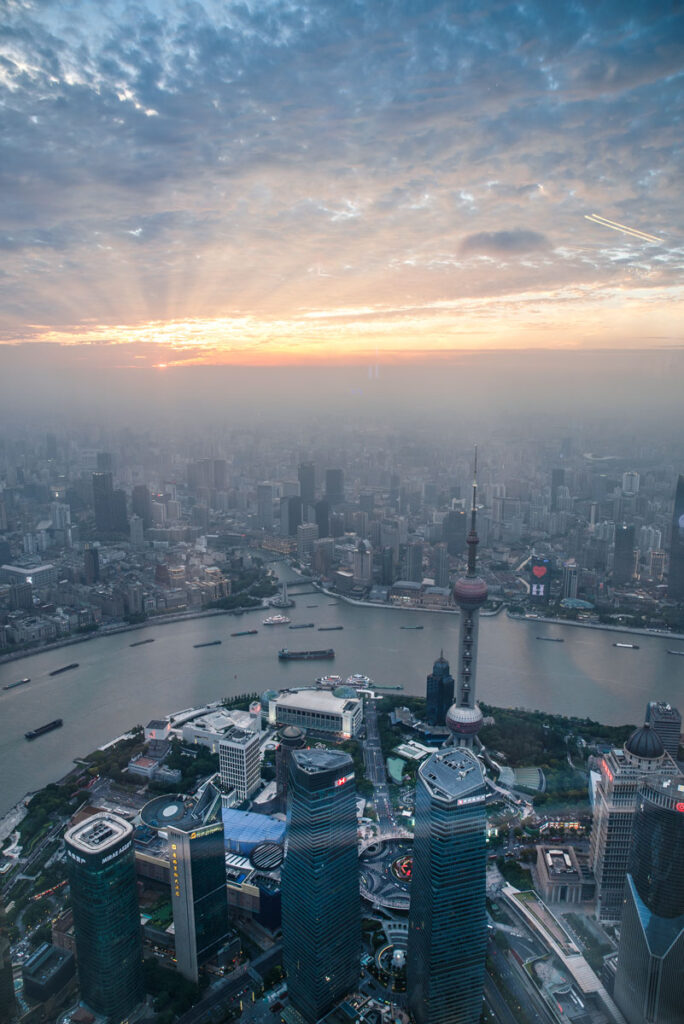
We made it to the Bund in time for sunset. We are joined by teenagers for a selfie and bridal couples for a romantic wedding photo on the railing overlooking the water. The towers opposite glow in all colors. It’s beautiful, it’s spectacular, but it’s nothing that other cities haven’t already shown us. Shanghai is certainly an impressive city. But above all, it’s a big city. Maybe that’s why Shanghai is so popular with travelers. Here you find the familiar in the unfamiliar. Some streets are more like London or Paris, the bright colors of the skyline could also light up a North American night sky. We don’t have the feeling of really being in China here.
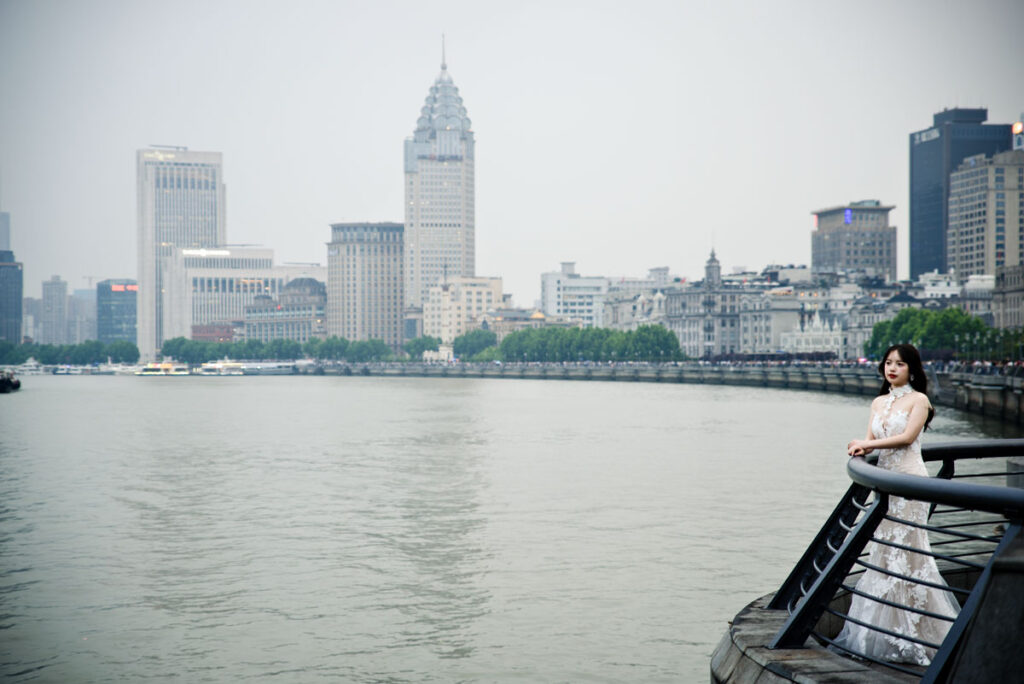
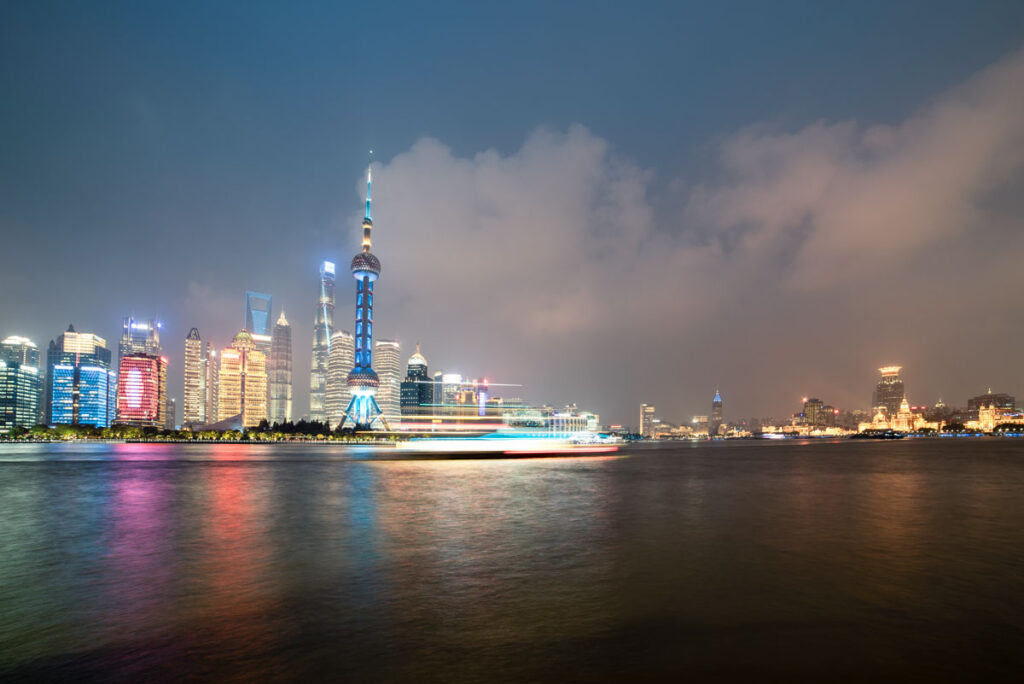
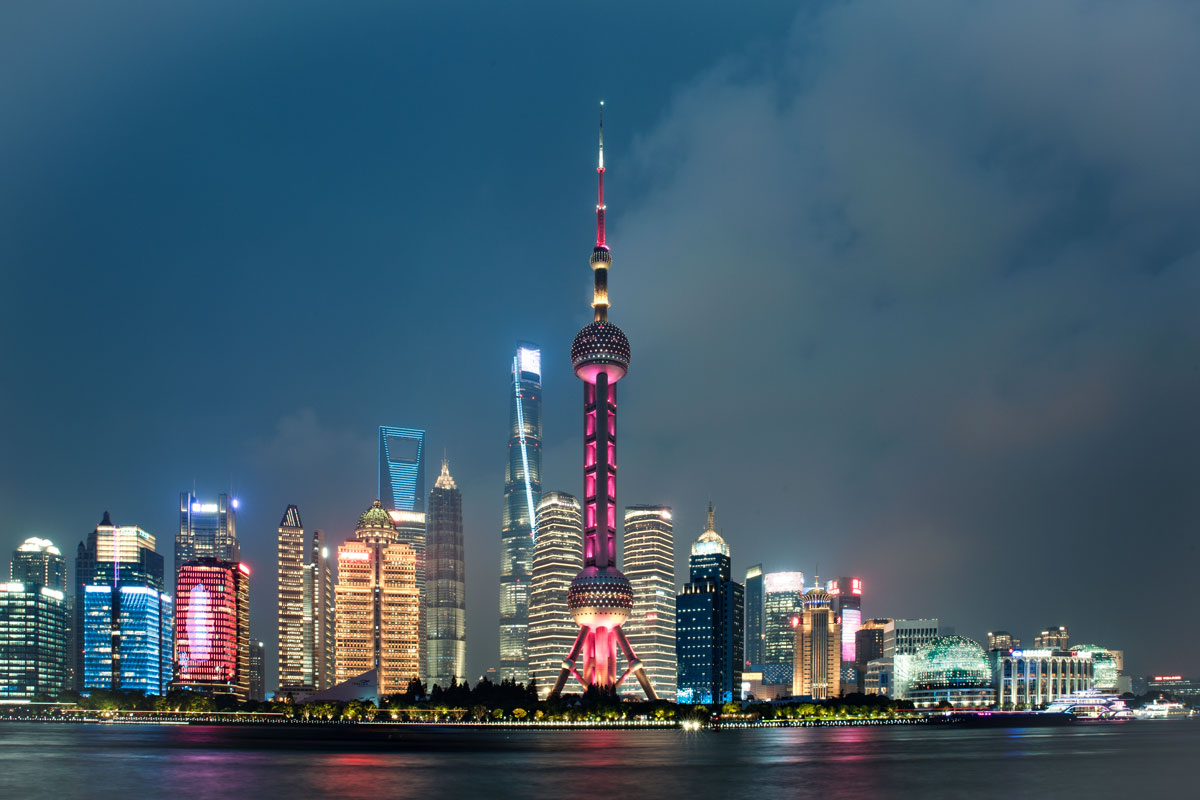
Shanghai is China light. It is a good introduction to this huge country. But above all, it is an easy, willing destination that aims to impress and please. It is an international showcase for China’s progress. What the expensive and smoggy capital cannot do, Shanghai is supposed to do. You can only marvel at how amazingly well everything works here – especially if you come from old Europe. And yet this city makes you feel that progress and the future do not necessarily have to be achieved for the good of mankind. It’s all about the goal of being first.
Info about our trip
We love megacities like Shanghai and New York. And no matter what you think of them – you should have seen such a city once in your life. We don’t want to judge whether it has to be Shanghai. In general, however, Shanghai is an easily accessible and pleasant city to visit – despite all the obstacles and difficulties that a trip to China entails. Forget the apps on your smartphone, because hardly any of them will work and most websites won’t load. Basically, you need four apps for Shanghai: MetroMan (the app contains the metro route network), a translation app (preferably from Bing, anything else won’t work), Organic Maps or Maps.Me (for offline navigation – Apple users should be able to use the Apple Maps service without restrictions) and Alipay, with which you can really pay EVERYWHERE (even if it’s not easy to set up – there is a special Alipay information desk at the airport that will provide you with friendly support).
In general, Shanghai and China tend to be cheaper. Not as cheap as the backpacker destinations in South East Asia, of course, but much cheaper than Japan or Europe. Rides on the metro only cost a few cents, and food and entrance tickets are also available for less than five euros per person. Only hotel accommodation is slightly more expensive compared to other expenses. Here you pay between 50 and 100 euros for decent and well-located accommodation.
Eating out in China is one of those things. With a translation app and helpful staff, it’s easy in a metropolis like Shanghai. As a vegetarian, however, it’s a real challenge. We always ate in different restaurants and were always surprised at how delicious the food was. We didn’t always find only vegetarian dishes, so we sometimes had to resort to dim sum filled with pork. Even in the sometimes underground food courts, which were very busy at lunchtime, we ate very well and at a good price. Of course, Chinese cuisine dominates, but you will also find other Asian restaurants everywhere (Thai, Japanese, Korean) and fewer European/American dishes (which is a good thing).
We would like to recommend one small restaurant in particular. It serves Buddhist-vegan food, prepared with a lot of care and love. The owner was incredibly nice and caring and the food was delicious. You can’t find the restaurant on Google Maps, but here you have the Google location of the building on the second floor. You have to take the elevator to get there. When you get out, it’s on your right.
We stayed at the SSAW Boutique Hotel Shanghai Bund and really loved it. The hotel has an upscale standard without being overly expensive. It is furnished in Thai style and the rooms and bathrooms are beautifully decorated. The breakfast buffet leaves nothing to be desired. There is a laundry room for free use, a small fitness room and generally quite good service. The location is also hard to beat – it’s less than 200m to the nearest metro station.
The omnipresence of security forces and police officers as well as all-round video surveillance is frightening. Before entering metro stations or important buildings such as museums etc., handbags and rucksacks are x-rayed. It is hard to imagine that anyone could even think of committing a crime in such an environment. In fact, the official crime rate is at a very low level.
We don’t want to speak for China at this point, but only for Shanghai. And this city was the perfect contrast to our previous, incredibly child-friendly stop: Taiwan.
In terms of the hard facts, there is actually nothing to say against traveling to Shanghai or China in general with a child. Healthcare is at a good level, hygiene is good in most of the country and the infrastructure is excellent. In reality, however, we found Shanghai to be the most child-unfriendly city we have visited in the past two years:
- We didn’t find a single children’s playground (!) in the entire city. None were marked on the Chinese maps either, nor were there any other nicely laid out parks where children could have played.
- The public toilets were not always as clean as we had previously experienced in Taiwan. There were also very few breastfeeding rooms or family toilets, and it would certainly not be any better in Europe – on the contrary. Therefore, this is only a small minus point.
- Baby supplies – especially diapers – are not available. At least not in drugstores, 7-Eleven stores and large supermarkets. While you can buy adult diapers in all of these places, you won’t find any children’s diapers there. What does this say about the demographic? After half a day of asking around with no results, the receptionist at our hotel was finally able to help us. She ordered a pack of diapers for us online – it took less than an hour for them to be brought to our room. So there are diapers to buy, you just have to know how 😉
The worst aspect, which we found extremely irritating after just a short time, was that the Chinese have no taboos or boundaries when it comes to foreign (fair-skinned) children. It happened that a Chinese woman simply took our little man with her to take a photo with him. He was repeatedly touched, picked up, photographed without being asked and given sweets. Yes, it may be that dealing with strange children is different in China. Perhaps there is also a lack of respect for foreigners and their children. But all too often, we were in stitches here. It was particularly bad on the viewing platform of the Shanghai Tower, where there was a lot of crowding.
So we wouldn’t generally advise against traveling to China with children. You should just know what you’re getting yourself into.
If you are prepared to walk a kilometer or two, you can reach all the interesting sights (and probably many more) by metro. A single journey costs just a few cents and the trains depart every few minutes, are clean and punctual. The MetroMan app provides you with the current route network. You can also use the offline Organic Maps app to display your route by metro. We never needed a cab.
If you are a technology enthusiast, we recommend a ride on the Transrapid Maglev. This will take you from the airport to the city (or back) in less than eight minutes. The ride costs less than ten euros and is a real experience, even though the train is now over 20 years old. It currently travels at 300 km/h in normal operation, but could theoretically reach over 500 km/h.
In fact, we didn’t manage to prepare ourselves for Shanghai with books or movies, or at least get in the mood. We only looked at a few YouTube blogs. We found the Better Beyond website (and vlog) very likeable and helpful, as the two travelers had visited Shanghai just one month before us.
